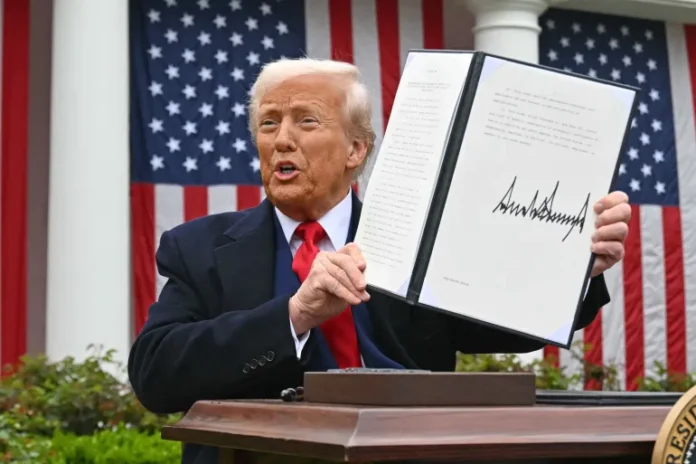Trump’s trade authority is now at the center of a high-stakes legal battle that could reach the U.S. Supreme Court. Legal experts believe the outcome may redefine the limits of presidential power on trade.
At issue is whether President Donald Trump exceeded his authority by using the 1977 International Emergency Economic Powers Act (IEEPA). He used that law to impose sweeping tariffs on numerous U.S. trading partners. The case has already sparked intense legal debate and could soon become a landmark ruling on executive power.
In a recent hearing, the U.S. Court of Appeals for the Federal Circuit considered arguments from both sides. Judges appeared skeptical of each party’s position. Attorneys familiar with the case say a ruling could arrive by September. This timing would still allow the Supreme Court to hear the case during its 2025-2026 term.
If the current appeals court does not rule in Trump’s favor, both his legal team and opposing states plan to appeal. The plaintiffs, including 12 states, argue that Trump misused IEEPA to bypass Congress and create new trade rules. However, Trump’s defenders insist the law grants him that power during national emergencies.
Dan Pickard, an attorney focused on international trade, described the hearing as inconclusive. He noted the 11-judge panel asked difficult questions of both sides. “It was more mixed than clear,” he told reporters. Similarly, Oregon Attorney General Dan Rayfield expressed cautious optimism about a partial win but admitted the future remains uncertain.
Back in May, a lower court ruled against Trump’s use of IEEPA. The Court of International Trade declared he lacked “unbounded authority” to levy tariffs under the law. However, the appeals court paused that ruling, allowing the tariffs to remain in place for now.
Meanwhile, Trump’s trade authority continues to influence global markets. His tariffs still stand, creating uncertainty among international businesses and economists. The Biden administration, while critical, has not yet rolled back all Trump-era measures.
On April 2, Trump announced a new round of tariffs. These included a 10% baseline tariff on all countries and higher rates for nations like China. He claimed the move was necessary to fix trade imbalances and strengthen American manufacturing.
Supporters argue these actions protect national security and domestic industry. U.S. Attorney General Pam Bondi defended the policy, calling the tariffs transformative for the global economy.
Trade lawyers warn the legal fight is far from over. Even if the Supreme Court rules against Trump’s use of IEEPA, he could still use other legal tools. Pickard explained that several statutes remain available to future administrations.
“There are more trade tools in the toolbox,” Pickard said. “We’re not at the end of this fight.” The case underscores a broader question: how far can a president go when shaping U.S. trade policy? With stakes this high, Trump’s trade authority will likely remain in the legal spotlight for months to come.
For more political updates, visit DC Brief.


